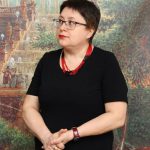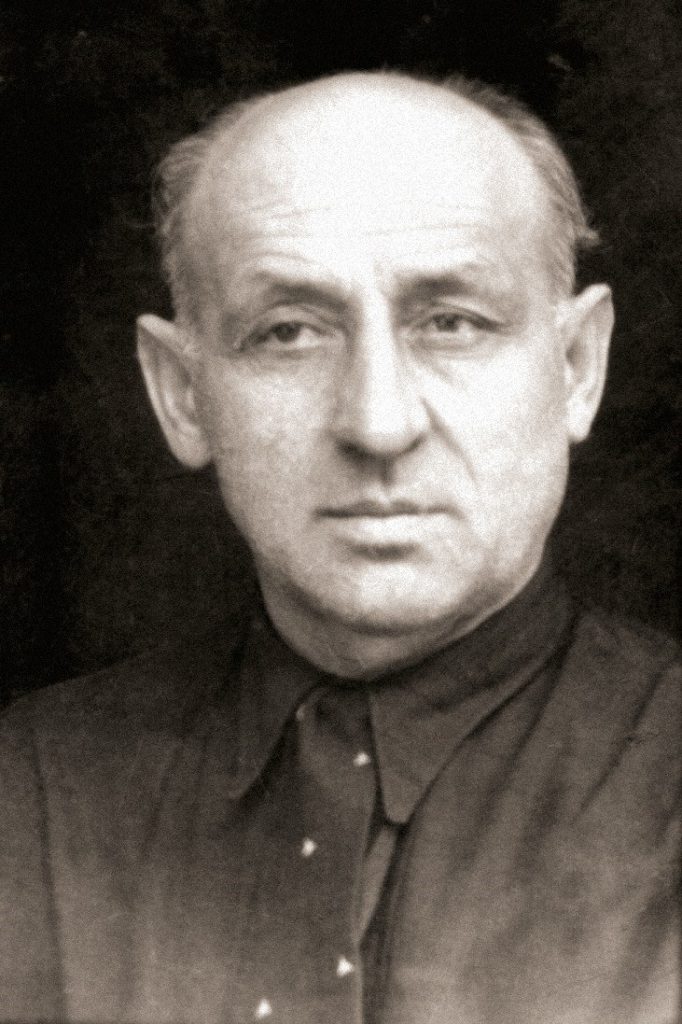
Head of the department, Dagestan Museum of Fine Arts named after P.S. Gamzatova
Member of the Union of Artists of the Russian Federation, Member of AIS
https://www.ais-aica.ru/q-q/239-2011-01-21-10-03-12/–2011110/2577-2011-12-29-08-21-25.html
Two artists stood at the origins of the Dagestan professional fine arts: the painter Muetdin-Arabi Dzhemal and the sculptor Khas-Bulat Askar-Sarydzha. It was with them that a new phenomenon began in Dagestan life: they were the first local artists endowed with the talent and received a professional education, therefore, by the will of fate, they were destined to become the founders of our art. But, of course, they were not the only ones, because the process of the formation of art and the emergence of secular forms of existence in general in the mountain republic was associated with a number of amazing personalities who, along with Jemal and Askar-Sarydzha, created new art.
Khalilbek Musaev, Yusup Mollaev, Magomed-Cairo Yunusilau, Dmitry Kapanitsyn …
The systematic development of the fine arts in Dagestan begins after the October Revolution of 1917. But history knows many facts, when adolescents and young people from childhood were fond of (often in secret) drawing, modeling, making the first full-scale sketches, copying illustrations from pages that miraculously got into the mountains magazines and newspapers, labels of imported manufactures and groceries, and the increase in the number of secular primary and real schools also fueled the creative interest of people who were keen on art. Such were Muetdin-Arabi Jemal and Khasbulat Askar-Sarydzha, who by their 17 years in 1917 had not only a desire to paint, but also some personal creative experience, multiplied by a love of art and curiosity. And fate turned out to be favorable to them. On their path in life, they met a teacher.

Evgeny Lansere (1875-1946) first came to Dagestan in 1912: to do illustrations for L. Tolstoy’s story “Hadji Murat” by order of the St. Petersburg publishing house Golike and Vilborg. The work on this series for Hadji Murat took Lanceray almost four years: in 1916 the book was published. The series of illustrations was based on the artist’s deep study of both historical and natural material – the landscape, life and character of the highlanders, the places where the events described in the story took place. This work is a kind of prologue to the history of the fine arts of Dagestan.
In such compositions as “Shamil among the Murids”, “Shamil’s Court”, “Hadji Murat descends from the mountains” a certain tradition was formed, the iconography of historical images, which to a certain extent fed later the young historical painting of Dagestan. But the Dagestan landscape acquired particular importance in this work for Lanceray.
One of the best in the series of illustrations can be considered a landscape depicting the Avar Koisu valley. It is known how highly Lanceray A. Benois appreciated this watercolor for its picturesque qualities, calling it “a masterpiece of masterpieces” and emphasizing: “The whole Caucasus is here.”
Thanks to Evgeny Lancer, a talented Russian artist, both Jemal and Askar-Sarydzha received a course in drawing and art education and were sent to study in Moscow and Petrograd, where they met famous authors and their works. In the capitals, young artists have acquired good professional skills and experience, an understanding of the value of a realistic approach to the display of the world, close contact with nature, its thorough knowledge; the ability to work in the open air, with a model, and most importantly, they realized the need for continuous self-education and improvement.
The leading role in the history of the development of Dagestan Soviet painting belongs to Muetdin-Arabi Jemal (1900-1960).
Before the revolution of 1917, Dzhemal was educated at a religious school-madrasah, from childhood he had a passion for drawing, observing beauty. He began his career as a painter on his own.
During the revolution, young Jemal creates watercolors “Tyrant Ol-Ol throws an unfortunate mountaineer off the Khunzakh slope”, “An old man playing the chagan”, “Girl in a spring garden” and oil sketches: “Sleepy horse”, “Medusa in the form of a mountain woman.” In Jemal’s early work, there was much that was eclectic and imitative. In his early works, Jemal tried to aestheticize antiquity, and was fond of stylization.

The first professional sculptor of Dagestan, Khas-Bulat Askar-Sarydzha (1900 – ?????) was born in the Lezgi village of Akhty.
The boy grew up in a large family, where his parents, especially the father, in every possible way contributed to the development of creative abilities in children. So, before becoming an artist, he studied music first at the Armavir School of Music, and then at the Moscow Conservatory in the piano class, was engaged in arranging folk melodies, and performed with concerts.
A visit in 1919 to drawing courses in Temir-khan-Shura together with M.-A. Dzhemal, organized by Evgeny Lansere, and then his acquaintance in 1922 with the Georgian sculptor Y. Nikoladze, played a decisive role in his future destiny, predetermining the choice of profession.
He created many works both in small, easel, sculpture, and monuments and monuments installed in various cities and towns of Dagestan and other regions of Russia. Many of them – “Portrait of Suleiman Stalsky”, “Portrait of Gamzat Tsadasa”, “Makhach Dakhadayev”, “Monument on the grave of the poet Makhmud” – and others, are well known to the Dagestanis and are loved by them, but few know the author.

Khalil-Bek Mussayasul (Musaev) (1897-1949) occupies a special place among the first national artists of Dagestan.
Being a creatively gifted person, Musaev began to study drawing from an early age. He is the first representative of the peoples of Dagestan who received a professional education even before the revolution in a European art school. Musaev was born in 1897 in the village of Chokh, Dagestan. In 1912-1913 studied at the school of the Society for the Encouragement of Fine Arts in Tiflis (under O. Schmerling). After graduating from school in 1913, on the advice of D. Mammadguluzadeh, he went and entered the Munich Academy of Arts.
During the First World War, Kh. Musaev was interned at home. 1915-16 biennium lived in with. Choh. In 1917 he came to Temir-khan-Shura, where he worked as a graphic designer in the printing house of M.-M. Mavraev, taught fine arts at a real school. Since 1918 he illustrated the magazine “Tang-Cholpan” (“Morning Star”) together with E. Lancere, who arrived in Dagestan in 1917. In 1920, he was appointed head of the arts department of the People’s Commissariat for Education of Dagestan. In 1921, Kh. Musaev went to Germany to continue his studies, studied with Hermann Greber and Academician Hugo Haberman. After completing his studies, he remained in Europe, where he lived until 1947. During these years, Khalil worked a lot, gaining worldwide recognition as a graphic artist. Illustrating the book “A Thousand and One Nights” determined his place among the great masters. In 1929-30. he visited Egypt, where, as an artist, took part in the filming of a film about Shamil. In 1947, Kh. Musaev and his wife moved to the United States. Longing for the homeland undermined his health for many years. In 1949, Musaev X. died in a hospital in Bethlehem, Connecticut.
Compared to Jemal, a more modest, but nevertheless, significant contribution to the development of Dagestan painting was made by other artists of the older generation: Mollaev, Yunusilau, Kapanitsyn, who also began their career in the 30s.
Yusuf Mollaev (1899-19640), a native of Kumyk peasants, graduated from the Crimean Art College in 1927, and returned to Dagestan in 1931 after four years of study at the decorative and applied departments of the Moscow Vhutein.
The beginning of his intensive creative work in his homeland coincided with the preparations for the first republican exhibition in 1933. Taking part in an expedition across mountainous Dagestan in the winter of 1932, Mollaev enthusiastically studied the local material, wrote landscape sketches in oils and watercolors (“The Road”, “Collective Farm Warehouse”), as well as compositions reflecting new features of folk life (for example, “Boys socialist competition agreement “).
Further, the artist continues to work in the genre of a thematic picture (“Balkhar” (1936-1940), “Suleiman Stalsky at the congress of livestock breeders in the Kremlin” (1941), “Presentation of an armored train to a military unit” (1949).
In the last decade of his life (during the 50s – early 60s) Mollaev worked in a landscape genre that was closer to him, developing in watercolor and painting forms of a chamber lyrical landscape, close to a sketch from nature. It was here that the artist achieved notable success.
The youngest among the masters of the Dagestan national painting of the pre-war period was Magomed-Cairo Yunusilau (1907-1975), who at twenty-five years old with great enthusiasm, but having neither experience nor art education, joined in the preparation for the first republican exhibition and together with Dzhemal and Mollaev participated in the 1932 expedition. He, like his colleagues, had a tendency to address large formats and event topics of his time. He boldly took on large historical and historical-revolutionary paintings: “The first meeting of the Military Revolutionary Committee under the leadership of Ullubiy Buinaksky” (1935-1937), “The Defeat of Gotsinsky’s Bands” (1948), “Bloody Wedding” (1957), “Shamil” (1966). However, his canvases also lacked professionalism. More mature in skill are the portraits he created (“Portrait of A. Akaev” (1945). In the 1970s he created an interesting series full of humor and satire under the code name “The Past of Dagestan”. With a pencil and coal, he ridicules the vices and shortcomings of the Dagestanis, talks about the ongoing changes. The drawings are in the journalistic and propaganda newspaper format of illustrations, sketches, “talking” feuilletons. Like his other associates, Yunusilau worked a lot in republican newspapers, was engaged in the design work of republican and city events and holidays, worked with children and working youth in studios and sections.
Dmitry Kapanitsyn (1895-1961) dreamed of becoming an artist since childhood, spent hours redrawing reproductions from paintings of great masters.
In the real school of Derbent, at drawing lessons, he enthusiastically studied plaster antique copies. The idea of becoming an artist became his cherished desire, but he managed to realize it only after the revolution. In 1924, Kapanitsyn entered the Leningrad Art and Industry College (they were admitted to art universities in those years without any conditions and tests).
After graduating from the technical school, Kapanitsyn returned to Dagestan in the early 1930s and gave all his creativity, skill and experience to the republic. In addition to easel art, he is engaged in almost all creative activities, in many of which he was the first. Kapanitsyn is engaged in illustration of books of Dagestani writers, scenography, monumental art, pedagogical artistic activity. In his work, D.A. Kapanitsyn always brought in his inherent high professional culture and delicate artistic taste.
The leading theme in the work of D. Kapanitsyn belongs to the landscape. Depicting the surroundings of Derbent, and later Makhachkala, he conveys the unique beauty of his native places. The landscapes are distinguished by their lyrical mood, poetry, and the artist’s rich artistic talent was revealed in them.
Kapanitsyn is known in the history of Dagestan culture not only as an artist, but also as a teacher. For 30 years, he disinterestedly and conscientiously taught painting and drawing to children, adolescents, and working youth.



